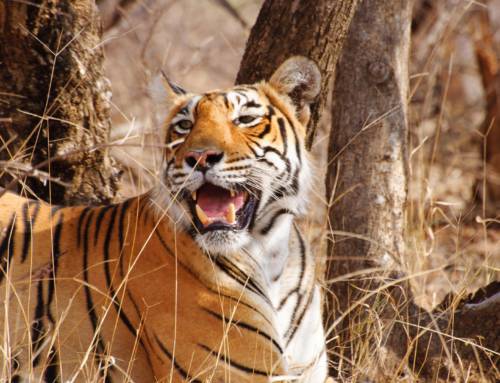Research Article: Srivathsa, A., Parameshwaran, R., Sharma, S., & Karanth, K. U. (2015). Estimating population sizes of leopard cats in the Western Ghats using camera surveys. Journal of Mammalogy, 96(4), 742-750.
Blog Author: Sikha Hariharan
Key Highlights:
- Leopard cats are distributed across a vast area and are considered to be the most common small cat throughout their habitat.
- Camera-trap surveys are conducted when the individuals of a species can be identified using distinct markings.
- A total effort of 16,736 camera-days across a 2,075-km2 area resulted in 65 detections of 43 uniquely-identified individuals.
- Bhadra had the highest population of leopard cats, followed by BRT, while Nagarahole and Bandipur TRs had the lowest density.
- Bhadra and BRT have high local densities in and around secondary, disturbed or partially-modified forests and human-use sites.
Leopard cats (Prionailurus bengalensis) are categorised as Least Concern under the IUCN Red List. However, their population might be dwindling in some parts of their range. These species occupy a variety of habitat (ie., they are generalists in their habitat use), but habitat loss and degradation, hunting, and use in pet-trade add to their declining population. Geographic mapping of ranges, like with many species, can only provide a rough idea of where a species is present. However, accurate and reliable population estimation is required to track the survival of the species.
One of the smallest cat species, leopard cats feature characteristic rosettes on their bodies as well as four stripes on their heads. They are nocturnal and elusive, which makes it difficult to monitor and study them. Due to this distinct markings and nature, they make suitable candidates to carry out population studies through camera traps. Camera-trap surveys are the best method for identifying and assessing the population of marked individuals, i.e., species with distinctive markings such as rosettes on leopards and stripes on tigers, and where individuals of a species can be identified using these markings.
The Wildlife Conservation Society and Centre for Wildlife Society scientists Dr. Arjun Srivathsa, Dr. Ravishankar Parameshwaran, Sushma Sharma, and Dr. Ullas K. Karanth collaborated to study these fascinating species using camera traps. From January to June 2013, camera traps were strategically placed along designated routes in four protected areas, namely, Bhadra Tiger Reserve (TR), Biligiri Rangaswamy Temple (BRT) TR, Nagarahole TR, and Bandipur TR.
The authors were able to recognise 22 and 11 different individuals from from Bhadra and BRT TR, respectively, using the camera trap photographs. According to the findings, there are approximately 10 leopard cats per 100 square kilometres (10.45 ± 3.03 SD/100 km2) in the Bhadra TR and approximately 5 leopard cats per 100 square kilometres (4.48 ± 1.31 SD/100 km2) in the BRT TR. Only 7 and 12 camera trap images were captured from Nagarahole and Bandipur TR, respectively. This was insufficient for identifying specific individuals and performing a population assessment , indicating a low population density in these two places.
Previous studies in other parts of the world suggest that the higher densities in Bhadra and BRT are due to their higher annual precipitation. Likewise, the comparatively drier forests in Nagarahole and Bandipur could be the reason for the lower densities. In addition, results show that the higher densities were clustered in secondary forests, coffee plantations, and human-settlement areas, indicating that secondary, disturbed, and modified forests favour the leopard cat population. It’s interesting to think that the presence of rodent species in human settlement areas might be an incentive for them to select these areas!
In other words, leopard cat populations are supported by the Western Ghats ecosystem. The study provides the first-of-its-kind insights into the population of these small cats in a larger landscape. The study further highlights the importance of areas outside protected areas, such as habitat mosaics and degraded forests, in providing a safe haven for some species and that these habitats also need to be conserved.
Key words: Leopard cats, Western Ghats, population estimation, camera traps, Bhadra, Biligiri Ranga Swamy Temple, Nagarahole, Bandipur, Tiger Reserve
You can access the original article here.





